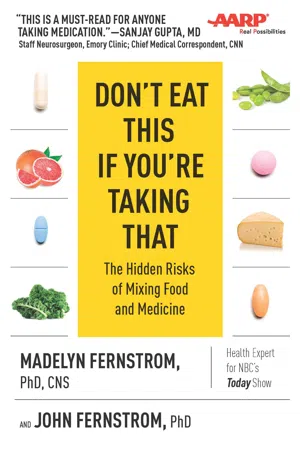![]()
1
Antidepressants
While antidepressant medicines are well-known options for millions of people, it wasn’t too long ago that the symptoms of depression were thought to be “all in your head”—and just a matter of willing yourself to feel better. Whether called “the blues” or melancholia, in the old days, the response to people reaching out for help was “life is tough, learn to cope.” But science has shown that nothing could be further from the truth. The treatment of depression and anxiety has been documented for decades to be a combination of biology and behavior that can be helped by medicine.
The role of the brain in controlling mood is connected to actual abnormalities in brain chemistry. Small changes in brain chemistry in one or more neurotransmitters (brain chemicals) can produce large changes in mood. For many people, depression is a medical illness that benefits from medical treatment and the use of medicines, along with psychological treatment to help make necessary behavioral changes. It’s that one-two punch of treatment that studies show is very effective in treating depression.
Key Information about Antidepressants
Tricyclic Antidepressants:
• Individual responses to tricyclics vary widely; you’ll work with your doctor to find the right dosage over time
• Many herbal supplements act on the brain, as do tricyclic antidepressants, so it’s wise to avoid herbal supplements while taking tricyclics
• Avoid alcoholic beverages when taking tricyclics; alcohol use makes it difficult to determine the proper dose of a tricyclic and exacerbates the drug’s side effect of drowsiness or dizziness
MAOIs:
• MAOIs boost mood by elevating serotonin and norepinephrine in the brain
• They have many food and supplement interactions that can produce potentially dangerous effects
• MAOIs cancel out the enzyme that makes it safe to eat fermented foods or take supplements containing amino acids, causing blood pressure to rise and other harmful effects, so avoid fermented foods and amino acid supplements when taking an MAOI
• Side effects of MAOIs include enhancing sleepiness and raising blood pressure, so limit foods that cause drowsiness (e.g., alcohol) or increase blood pressure (e.g, caffeine, natural licorice)
• MAOIs raise serotonin levels in the brain, so it’s critical not to mix them with serotonin-raising dietary supplements, which could be life-threatening
SSRIs and SNRIs:
• SSRIs and SNRIs are more selective in how they act on the brain than tricyclics and therefore have fewer side effects
• SSRIs boost mood by elevating serotonin in the brain, while SNRIs do so by elevating both serotonin and norepinephrine in brain
• Side effects of SSRIs and SNRIs include sleepiness and drowsiness, so limit alcohol when taking either drug
• It’s dangerous to take an SSRI or SNRI with a supplement that raises serotonin function, like St. John’s wort, tryptophan, or 5-hydroxytryptophan
About Antidepressants
Beginning in the 1950s, the first generation of antidepressants—tricyclic antidepressants (TCAs) and monoamine oxidase inhibitors (MAOIs)—was discovered and quickly entered the marketplace. More than 50 years later, these medications are still used to treat certain types of depression. As interest in the connection between brain chemistry and depression continued to develop, a new class of antidepressants was introduced, the result of years of scientific research.
New to the market nearly 30 years after the first medications were introduced, these drugs were named selective serotonin reuptake inhibitors (SSRIs), to resemble the action they had on brain chemistry. They became widely used because they worked well and had fewer side effects when compared with the earlier medicines. SSRIs are used primarily to treat major depression, but many are very useful for the long-term treatment of anxiety disorders and panic disorders. All are presently in clinical use.
Even more medications have been developed for the treatment of depression. A variation of the SSRIs (which only act on serotonin nerve cells), selective serotonin and norepinephrine reuptake inhibitors (SNRIs) are drugs that act on two brain chemicals: serotonin and norepinephrine. This next generation of medicines has been shown to be a useful addition to antidepressant treatment options.
Still other antidepressants have been identified that don’t fit neatly into one of the broad drug categories above. This is because their action on the brain is somewhat mixed, or not well understood, but they have proven to be good treatment options for some patients.
Everyone’s brain is different, so it is a modern medical miracle to have so many drug options to help treat depression. The long-term treatment can be challenging, but the right combination of medication and talk therapy has provided relief for millions of people.
We’ll take a look at each of these drug classes separately because of the important differences in how foods and supplements affect their actions.
Medications Used to Treat Depression
Tricyclic Antidepressants
Nine different tricyclic antidepressants are available in the United States:
• amitriptyline (Elavil)
• amoxapine
• clomipramine (Anafranil)
• desipramine (Norpramin)
• doxepin (Silenor)
• imipramine (Tofranil)
• nortriptyline (Pamelor)
• protriptyline (Vivactil)
• trimipramine (Surmontil)
Although they are in the same medication class, very small differences in their chemical makeup have different effects. That’s a great thing when it comes to antidepressants, because individual responses to medication can vary widely. What is a miracle drug for one depressed person might not work for another.
If you begin taking one of these drugs, the daily dose will usually be divided into smaller doses taken throughout the day. After several weeks, once you and your physician have determined whether the medication is working, your doctor may suggest that you take the entire daily dose at one time. The general recommendation is usually shortly before bedtime, because these drugs can make you sleepy soon after you take them.
Foods to Avoid
Alcohol use can interfere with the delicate balance of choosing a dose of an antidepressant to optimize beneficial effects...


